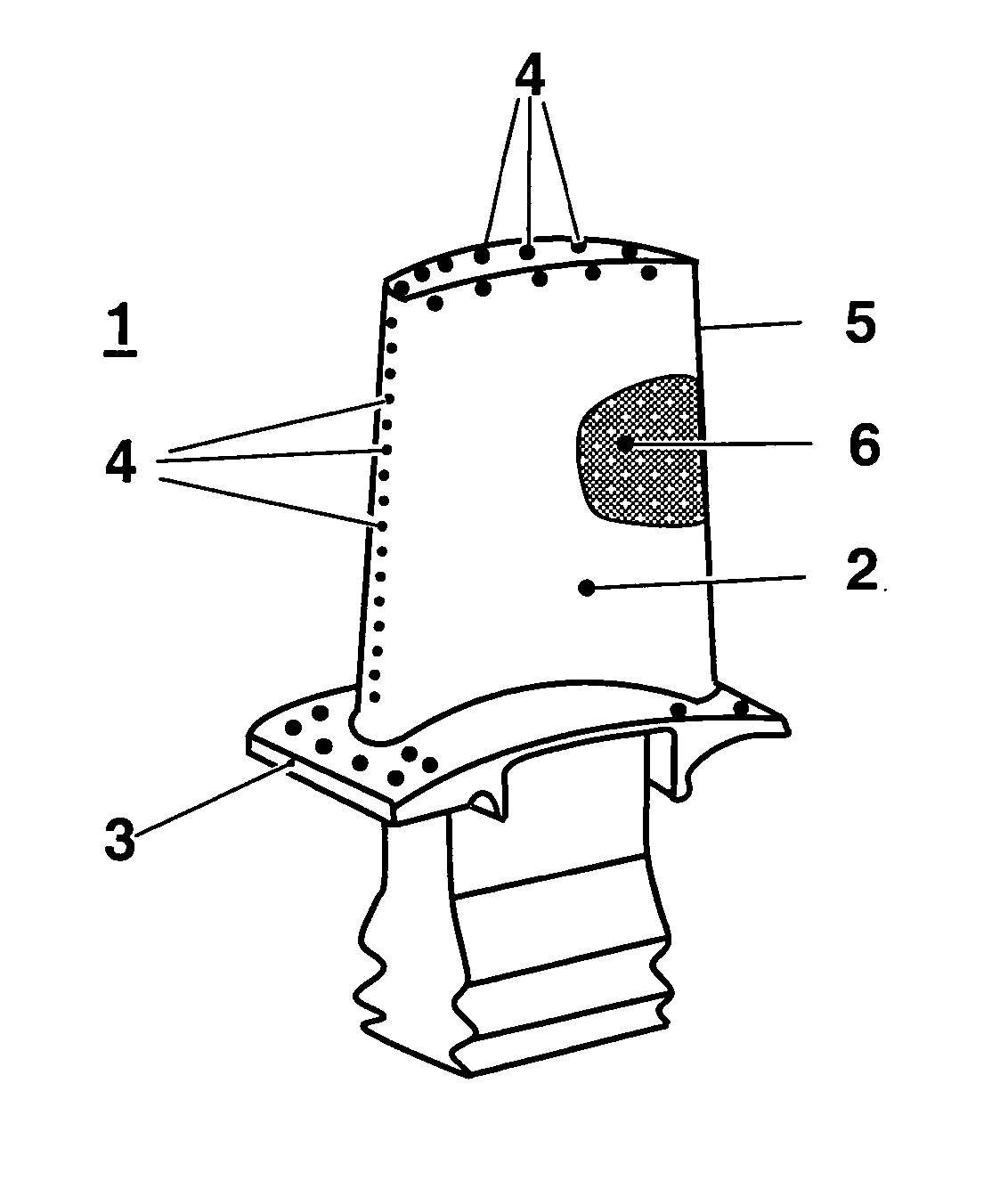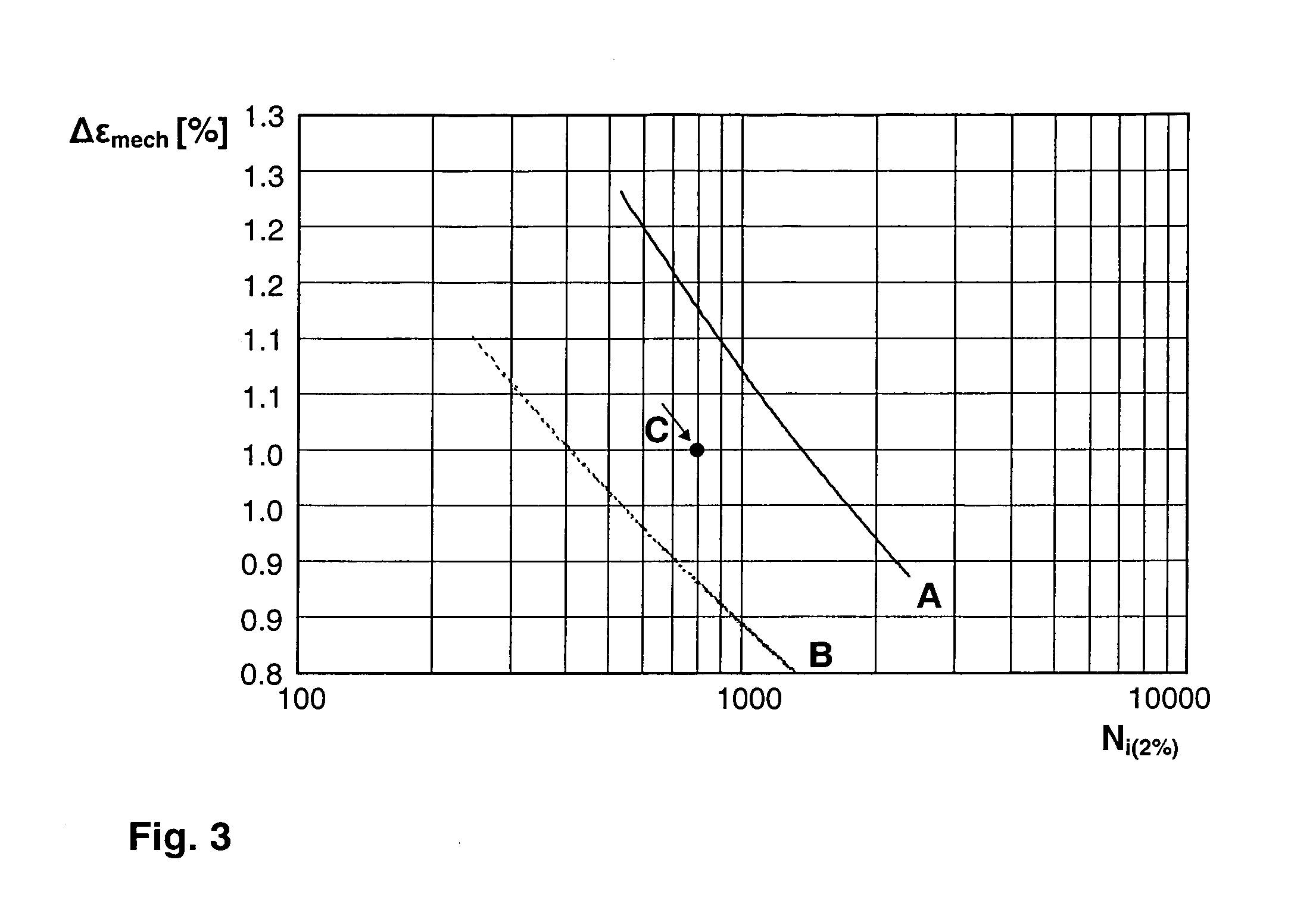Process for strengthen grain boundaries of an article made from a Ni based superalloy
a superalloy and grain boundary technology, applied in the direction of crystal growth process, solid state diffusion coating, after-treatment details, etc., can solve the problems of inability to maintain the desired life of the component or the desired, and in the practice of casting a large perfect single crystal component, etc., to achieve the effect of partially restoring the mechanical properties of the defect area
- Summary
- Abstract
- Description
- Claims
- Application Information
AI Technical Summary
Benefits of technology
Problems solved by technology
Method used
Image
Examples
Embodiment Construction
[0027] The present invention is generally applicable to components that operate within environments characterised by relatively high temperature, and are therefore subjected to severe thermal stresses and thermal cycling. Notable examples of such components include the high and low pressure nozzles and blades, shrouds, combustor liners and augmentor hardware of gas turbine engines. FIG. 1 shows as an example such an article 1 as blades or vanes comprising a blade 2 against which hot combustion gases are directed during operation of the gas turbine engine, a cavity, not visible in FIG. 1, and cooling holes 4, which are on the external surface 5 of the component 1 as well as on the platform 3 of the component. Through the cooling holes 4 cooling air is ducted during operation of the engine to cool the external surface 5. The external surface 5 is subjected to severe attack by oxidation, corrosion and erosion due to the hot combustion gases. In many cases the article 1 consists of a ni...
PUM
 Login to View More
Login to View More Abstract
Description
Claims
Application Information
 Login to View More
Login to View More - R&D
- Intellectual Property
- Life Sciences
- Materials
- Tech Scout
- Unparalleled Data Quality
- Higher Quality Content
- 60% Fewer Hallucinations
Browse by: Latest US Patents, China's latest patents, Technical Efficacy Thesaurus, Application Domain, Technology Topic, Popular Technical Reports.
© 2025 PatSnap. All rights reserved.Legal|Privacy policy|Modern Slavery Act Transparency Statement|Sitemap|About US| Contact US: help@patsnap.com



